The Bridge (aka the Valdez)
Somewhat reluctantly, it must be recognized that some sort of broad philosophical context must be established for the work at hand – Homo Mysticus and Theology Reconsidered taken as a tandem as it were, re-establishing the boundaries of Science and extending the notion of the persona and the Soul as domains of empirical scientific study, as they were considered in antiquity in fact.
Objective realism isn’t wrong necessarily, it is just incomplete. Same could be said of materialism, logical positivism, and Subject-Object Metaphysics, and perhaps most importantly causal determinism. We need a new ism. But what should it be? It’s not a reversion to idealism, for this is also incomplete. It’s not transcendental idealism either, this does not go far enough. Heroic idealism sounds nice, but that is more of a pure philosophical play than it is first philosophy or metaphysics necessarily and this is what we need.
A wholesale revision of how we view the world and how we should view our places with it. It shouldn’t be religiousy because we consider it to be more of an engineering discipline more so than anything else. Yes it spiritual, in the sense that the laws it obeys are of the spirit world as much as they are the material, in fact the spirit world is more of the impetus, the driver if you will, of the material world in this model but that doesn’t make it mystical in the non-sciency sense. The laws it obeys are consistent and coherent, they are just not material laws that are designed for measurement, for the qualification of (solely) observable, and by extension, measurable, phenomena.
It’s a Science this mystic gnostic thing we call Self, and its study is a field of knowing, of understanding, through which in fact most everything can be understood. It is first philosophy because it provides the existential ground for everything else that is to be studied. To leave it out, and to study all else, is misguided and leads to confusion. And here we are.
So what we’re doing here with the Valdez is the construction, really revision given that we put some of the basic building blocks in place in Theology Reconsidered, of an intellectual edifice through which not only the Sciences are to be (properly) understood, but also the lens through Religion must also be understood. It is designed not from scratch, but as an composite metaphysics of sorts that intends not to rebuild the proverbial metaphysical wheel, but to extend and couple together some existing models to establish a framework that is cohesive and complete.
This approach is an engineering one, it’s one we use in Computer Science, really Software Engineering, all the time. No need to rebuild the software from scratch, its cheaper and easier – and as any good engineer knows typically more reliable – if you take a few off the shelf products, put them together and voila! We have what we need for 1/20th the cost, 1/50th the work and we literally inherit the strength of the existing components that we pick up off the shelf. The proverbial tires have been kicked on these components for decades if not centuries, they have withstood the tests of time, and what they lack we intend to buttress not be throwing the baby out with the bathwater but by augmenting said systems to account for new developments – in Science and Religion.
This is literally how modern civilization has advanced for thousands of years and yet Philosophy is continuing to try and recreate the wheel with every generation.
This exercise is not just one of recovery, it is one of meditation and mastery as well. Starting with knowledge (jnana) combined with the proper amount of devotion (bhakti) and work (karma) and we add a little shakti, human will (raja), and voila – the gates of heaven literally open up before us. No joke.
We follow Vivekananda’s teachings because he is great yes, but he is great because he is right. The system works and it provides not only the driving force of ascent, but also the guiding force of ethics and morality that ensure we do not lose our way. For this path is the razor’s edge no doubt, a fact that is well known by all who seek the Truth.
As such, we leverage the same techniques of Yoga, Upanishadic philosophy, that have been tried and tested for thousands of years, centered around proper understanding, proper habit, ritual, and the programming of the mind-body by use of symbols and, most pertinently herein, by sound.
We establish this intellectual framework, The Valdez (our name for the Bridge), by means of not simply writing and reading, which is the exercise we are doing together, but by saying, by speaking and hearing. This work is an upanishad not because I am a Rishi, but because the technique that we use for this transmission of knowledge is Upanishadic, literally in the sense of a sitting down and listening. It is a teaching, and all teachings are transmitted through sound, through a proper approach and intent, through which knowledge can be gained. Through which things can be understood. I simply provide the breadcrumbs, the knowledge gained is your own. You always had it. It is your birthright. I am just a means of transmission, but this means must involve a vibration through which you can resonate a frequency through which these subtle ideas presented herein can be understood.
To this end, one must focus in particular, provide the proper attention you might say, to the parts that are emphasized herein – in italics mostly. This is why we use the more orthodox spellings, with the proper annunciation characters, on all the source words from the Greek, the Hebrew, the Sanskrit etc. – these words are key words whose sound must be understood. The meaning of the Vedas is in their hearing, and their understanding. Same is true of the Upanishads. Sound has always been sacred. There is a reason for this. We are leveraging that toolset here, but it is a two-way street – I use it, but the reader must understand the technique and must appreciate and respect it and approach it accordingly. This is why mantra’s are effective. They are coupled with visual imagery and sound of course, through which their power is derived, transmitted.
To this end, the voice of the author, the words he is using, should ringing in the head of the reader. It is through this ringing, through this transmission of sound, how information and knowledge is effectively encoded as we can see from your reading of these words right now and your ability to understand them. Let the emphasis in the text, and the words themselves that are so emphasized, ring in your mind, in your mind’s eye, such that the sheer effervescence of the truth may shine through and reflect itself in your mind, and in your whole being. After difficult parts, meditate on them if you so wish. Approach them with reverence and respect, with devotion. In this demeanor is properly acquired, in time all will be revealed. And everything herein will make sense.
This is gnosis. This is true knowledge, the highest knowledge of the Upanishads.
This approach, this method then facilitates the ascent in consciousness through which much of the content herein can be, can only be, understood. These are not math problems, or geometry problems. These are life problems and if we understand how all these pieces fit together, us included, we will be in a much better position to crush life. So let’s crush it, together then.
Ok so now with the key terms and tying them together – not just from and for proper understanding of Theology Reconsidered but for Homo Mysticus as well. While we cover some of these terms in detail in Theology Reconsidered[1], it is appropriate and timely to review them here, and how they come together to form what I am calling the Valdez, a new metaphysical and ontological framework for homo mysticus. A new Science for a new species of hominid in effect.
First and foremost what we are trying to accomplish here is, via an offering of sorts – to the Muses, to the gods, to God, Yahweh, Allah or whomever – is the true nature of our reality, this mystery of life. as best as our feeble little minds can comprehend.
Using Theology Reconsidered language then, we approach this supraconsciousness with humble respect to try and understand not just how it is we came to be, but how anything is. This being which we study, which we meditate on in order to understand (as we would anything), this practice of ontology, is from a consciousness or psychological perspective what we call Awareness.
This is Aristotle’s first mover, from which the phenomenal world – wànwù, the ten thousand things of Chinese philosophy – emanates from, originates from and exists because of. And, this is the tricky part, whose existence itself allows itself to be meditated on, studied and understood at any level. This is the mystery of existence really, that it is circular in a way as we are, in our true essence as all the ancient traditions tell us, that which we seek.
Tát tvam ási
Thou art that is what the Rishis tell us in the Upanishads. That’s a koan if I ever saw one. Spend a few minutes on that one. I dare you.
This is the highest point then in our metaphysical structure, but it is not just the apex, it is everything. Everything emanates from it, and is co-eternal and ever present with it, even though it may seem to exist separately from it, this is only an illusion and play of light and mind. A divine slight of hand if you will through this universe that we live in and all the things around us seem to be separate from it.
Note that we do not take the oft taken step to conclude that this world is unreal – it is not. This is false and represents one of the misunderstandings that proliferate spirituality today that we intend to eradicate here. This world of name and form is not illusory, it is not ephemeral, it is real, it exists and therefore takes part in, inherits these supraconscious attributes you might say. It simply is not what it appears to be. In our efforts to wrestle verifiable truth from it, to bound knowledge itself by whether or not some measurement can be reproduced in a lab, we have lost its true meaning and as such we have become lost.
So we have Awareness at the top, corresponding almost precisely to the Neo-Platonic One, which is appropriate because of the numerological and geometrical bent of this work. In fact one of the best ways to remove all this religious orthodoxy (which includes materialism as much as it does mysticism) is just to deal with numbers and shapes. Because they have no proverbial axe to grind, they do not belong to one tradition or another – they are by definition universal, and agnostic. They don’t care whether or not you believe in them. They are, they are true in the sense that their existence from a theoretical perspective is verifiable and exact, and the relationships which describe their relationship to each other also are true and verifiable.
Psychologically speaking then, despite the fact that we are that which we study, we perceive it through the mechanism of this embodied form, and the material and spiritual elements of which it consists of. By spiritual here I mean more psychological and mental, thought and cognition, apprehension and perception from. Kantian perspective. And because this process is psychological, because gnosis is the actual embodiment of knowledge rather than its simple comprehension, we therefore must have a good working definition of the psyche, in effect the means by which any sort of understanding may occur.
From a Kantian, Jungian and Freudian perspective then it is through this psyche, a core element of what we refer to as the persona throughout, by means of its support you might say, that we may experience anything at all. The body is made of flesh, but it is made of spirit too – animus – by which it is brough to life and through the exhaustion of which it comes to an end in time and space.
The Soul however, this age old poor decrepit word that has been beaten down so much over the centuries, persists beyond death. This is the Ātman they speak of in the Upanishads and this is a real thing, a real entity that exists that is not the body and yet. Gives life to it, shapes it. I cannot make you believe this, and this is perhaps the largest leap of faith anyone who hopes to get something out of this work must make. But you must make this leap in order for the flip, as Kripal calls it, to occur. It’s a chicken and the egg problem but it is one of perspective, nothing else.
I try to help the reader get to this point by looking at the current state of Physics, Quantum Theory in particular, and helping them understand – as Einstein did not in fact – that the existing constraints of the model must be relaxed in order for a proper understanding to be had. This is the sciency part of this work. It’s the evidence that yields the conclusion that the ground of existence is not bound by classical, orthodox views of time and apace – or at least this realm of the Awareness is not. It plays by different rules and if we are to understand it in any way, we must understand what those rules are and how they differ from the rules of classical physics and orthodox (Freudian) Psychology.
This psyche then that we refer to throughout is that subtle entity that exists within us, that mass of memory and behavior (karma) that defines us to us in way, that is not Soul necessarily, not Ātman but the basic building blocks of the same. It is a close cousin, that we accept from a Psychology perspective through which the idea of the Soul can be understood.
Once we connect with Psychology in this way, while we get into its metaphysics in the Valdez which looks at Kant’s cognitive framework in some detail (through which the notion of Awareness comes to be defined), we can then understand – through Jung’s work more so than Freud’s – the underlying architecture of the mind, this thing we call psyche. We have the conscious and unconscious aspects of mind no doubt, but the unconscious has this strange underbelly, this store of archetypes from which myth is born, the land of dream, which ties us, our psyche, with what he calls the collective unconscious.
Through this understanding then, we come to understand the notion of what Jung calls synchronicity, this manifestation in time and space, in physical form, of ideas relating to the experience of meaning. This happens all the time for every one of us, we call it coincidence mostly but if we look at the phenomenon more closely we will surely find what Jung did in that while coincidences do exist, this is something else entirely.
What this speaks to, hints at – and this is how we tie together the world of Psychology and Physics – is the existence of some sort of implicate order through which worlds of name and form, a type of explicate order, are manifest. This is the lasting contribution from a philosophical and metaphysical perspective that David Bohm leaves us with, outside of his contributions to Quantum Mechanics directly (see pilot-wave theory).
Ok so we have hit Philosophy, Psychology, Religion and Physics thus far. We have laid the intellectual ground, the base terms that we will use to bring these systems of thought together into a more cohesive, and perhaps more importantly coherent, framework through which not only will each of the individual disciplines be better understood, as parts of an intellectual whole, but also via which we shall come to a much better understanding of the underlying reality that they all attempt to describe.
In order for us to gain this appreciation though, we must extend the container of knowledge itself. We must extend our materialist and pseudo-spiritual metaphysics, our worldview, to account for this progress that is made across all these disciplines – with perhaps the latest developments in Cognitive Science and Artificial Intelligence being the biggest drivers. Academia just doesn’t quite get us there in its current form, it punts on all the hard problems basically. And it is the answers to these hard problems, or at least our feeble attempts at answers, that provide the only way to understand the most important questions of life. Namely what are we doing here? To what end?
So true to form, we don’t construct another system of philosophy to solve for this pretty specific and core philosophical problem, studied under the heading of epistemology (the extent and boundaries of knowledge, or that which can be known), we harken back to Aristotle’s framework which was a heck of a lot better, and more simple (simple is important) than much of what else is out there today. And his framework is scientific. In fact the words that he chose to describe it in fact give us the word science itself – through sciencia in the Latin from the Greek epistêmê.
As Pirsig tells us, the most important analytical strike of any philosophical system is the first one, for everything flows from this really. This is your yīn and yáng, your subject and object, or your trinity as the case may be. With science, we look to Aristotle’s cut(s) because these were perhaps the most significant and more or less we have stuck to them over the centuries. Less so the last century or two but persistent and foundational nonetheless and as such necessary for a frame of reference as to what we are constructing here.
Aristotle, as he outlines in Physics no less, had three basic forms of knowledge from which his entire philosophical system, as a pursuit in knowledge (philosophia, literally lover of wisdom remember), should be understood:
- the theoretical sciences,
- like philosophy proper as well as theology
- study of knowledge for its own sake
- natural objects subject to change (which includes heavenly objects as well as natural ones)
- study of objects in abstraction from their motion, Mathematics here
- study of the unchanging, i.e. theology
- productive sciences
- aims at the creation of something
- beauty and utility
- unique to human beings as creators
- depends upon reason, ability to solve problems
- practical sciences
- science of action, ethics
- study of what it means to live well, virtue
- concerns conduct and good action
- at individual as well as broader societal level
While it is mostly the theoretical sciences we are interested in here in this work, we do have spill over into the productive and practical sciences as well and as such we are looking at a framework that not only in scope covers Aristotle’s scientific triad (which has proven to be an effective, and complete, system of classification turns out, hence its persistence over two millennia+).
Part of this core theoretical science however since its inception did not separate out the study of the natural world from its cause. This is one of the key intellectual strokes that must be made to bring this all together and re-establish the boundaries of what it is to know.
(i) The theoretical sciences include prominently what Aristotle calls first philosophy, or metaphysics as we now call it, but also mathematics, and physics, or natural philosophy. Physics studies the natural universe as a whole, and tends in Aristotle’s hands to concentrate on conceptual puzzles pertaining to nature rather than on empirical research; but it reaches further, so that it includes also a theory of causal explanation and finally even a proof of an unmoved mover thought to be the first and final cause of all motion. Many of the puzzles of primary concern to Aristotle have proven perennially attractive to philosophers, mathematicians, and theoretically inclined natural scientists. They include, as a small sample, Zeno’s paradoxes of motion, puzzles about time, the nature of place, and difficulties encountered in thought about the infinite.[2]
Puzzles be damned what he was trying to tease out of the universe itself was the answers to its most basic questions – and practical ones too of course in terms of understanding how objects move and are subject to change, etc – like what is that can be said about the basic fundamental nature of the universe and how it was brought into being. He is, as Plato did before him, taking myth and systematizing it in a way. Appending a level of rational analysis to themes that humans have struggled with since well, since there were homo sapiens. This is what distinguishes that speciation, said thinking.
The development of precise writing techniques (alphabets), and the technology of writing itself (papyrus leaf primarily in the West and bamboo and silk to the East) the ancient traditions and wisdom could not only be documented for posterity and preservation but they could be built up, to vast proportions. It was the beginning of the information age, the very very beginning. And at their inception, theology and nature were two sides of the same coin. A three-sided coin with man in the middle according to the I Ching in fact. A three sided two facing coin really, this is what a hexagram is after all.
Subject-Object Metaphysics is worth mentioning as well, Pirsig’s value matrix you might call it. It also makes a broad attack on this idea of logical positivism[3], that only that which is verifiable through observation or logical proof is said to have meaning, philosophically speaking at least. This is the basis of the Copenhagen Interpretation and it is a sad, sad way to look at the world that is for sure. It is empty, by any definition almost.
But more than this, it is – to borrow Einstein’s words for a different use – incomplete. And to understand how it is incomplete, we must look at Aristotle’s epistemology through causality. Aristotle gave us four necessary and sufficient causes for the basis of understanding anything. For knowledge effectively, what came to be understood as epistemology, through the Latin to “to know”, the very root of sciencia.
- The material cause: the material something is made in or out of
- The formal cause: shape or architecture (Plato’s Form or type, eidos)
- The efficient cause: the agent through which something is brought into being
- The final cause: the purpose of a thing
To fully understand something, anything then, had to rest on a notion of causality which in effect has four pillars through which its intellectual foundations could be understood you might say. This is Aristotle’s attempt to ground rational thought, provide the basis upon which you can develop logic, and more broadly reasoning. This was part of the revolution that he was ushering in whether or not he knew it at the time (unlikely) or not. And if we are able to say anything rational about anything, in the sense that it can be said to be ‘true’, for our understanding of it to be complete, we need these four corners of causation to come together in a sort of unison through which knowledge itself, in an gnostic sense here, can be said to exist.
Now we have the Aristotelian ground that I wish to establish this treatise on, to which I augment a little Computer Science, a little modern Physics, a little Psychology, a little mysticism and the esoteric to bring together what we hope is some sort of coherent look into what we expect Science to look like in say 100 years or so.
[1] See Eurasian Philosophy and Concluding Sections of Theology Reconsidered primarily.
[2] Shields, Christopher, “Aristotle”, The Stanford Encyclopedia of Philosophy (Fall 2020 Edition), Edward N. Zalta (ed.), URL = <https://plato.stanford.edu/archives/fall2020/entries/aristotle/>.
[3] In its postmodern form as neopositivism.


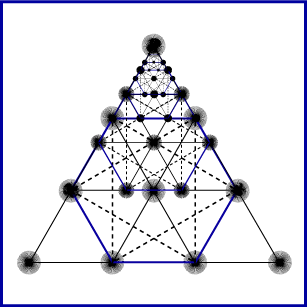
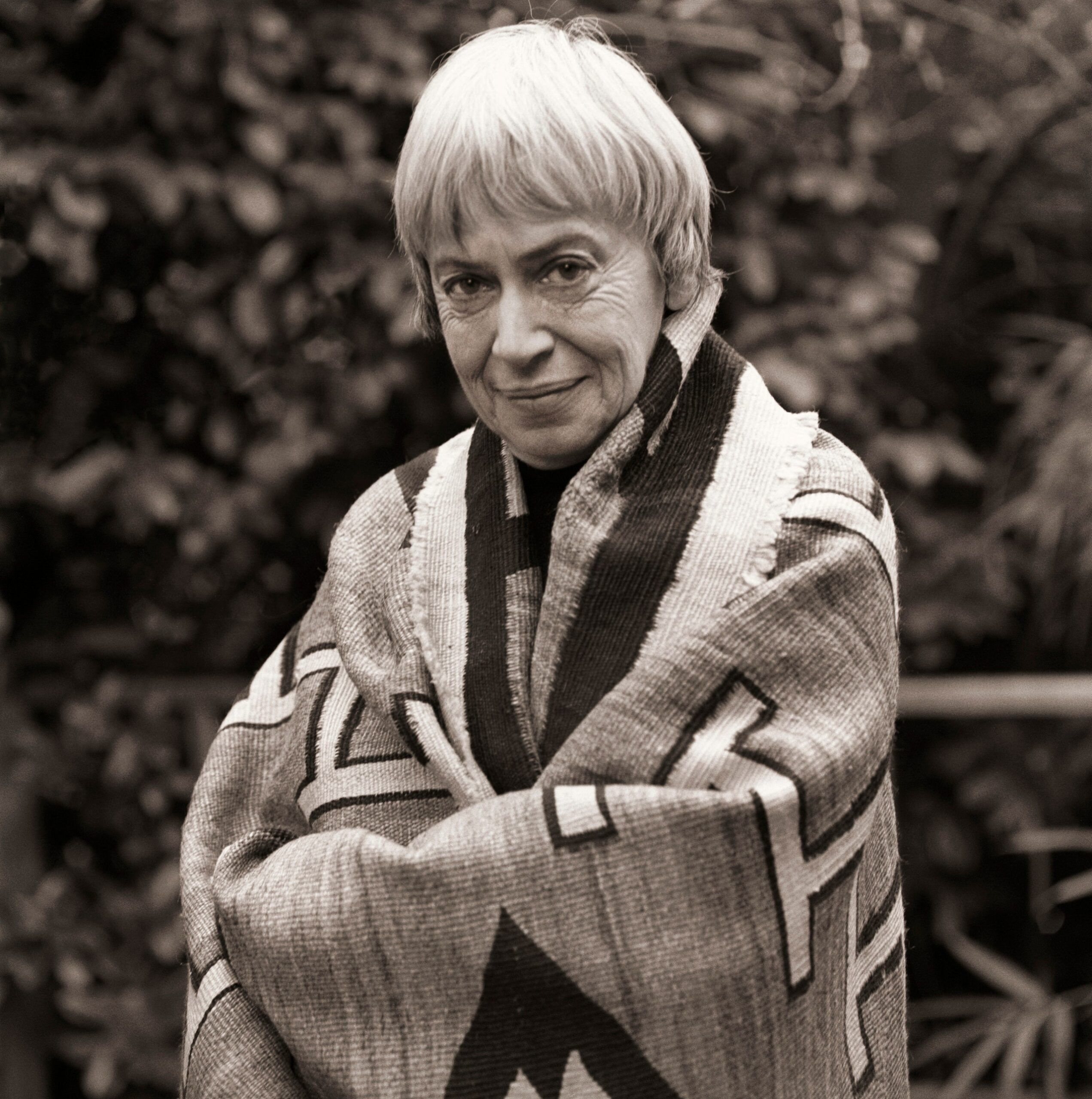



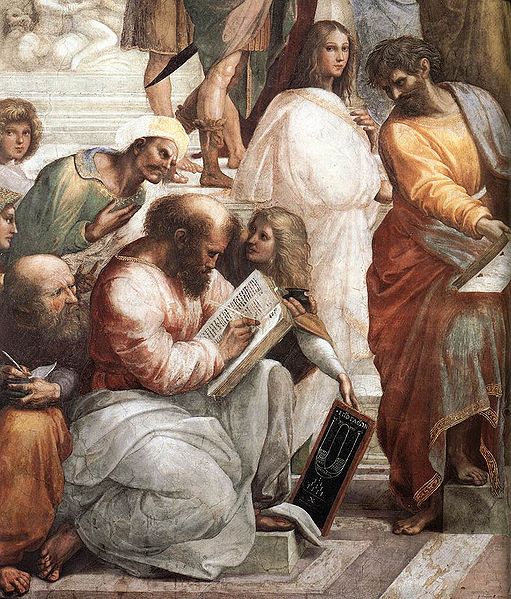
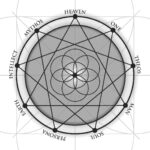
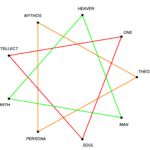
Leave a Reply
Want to join the discussion?Feel free to contribute!